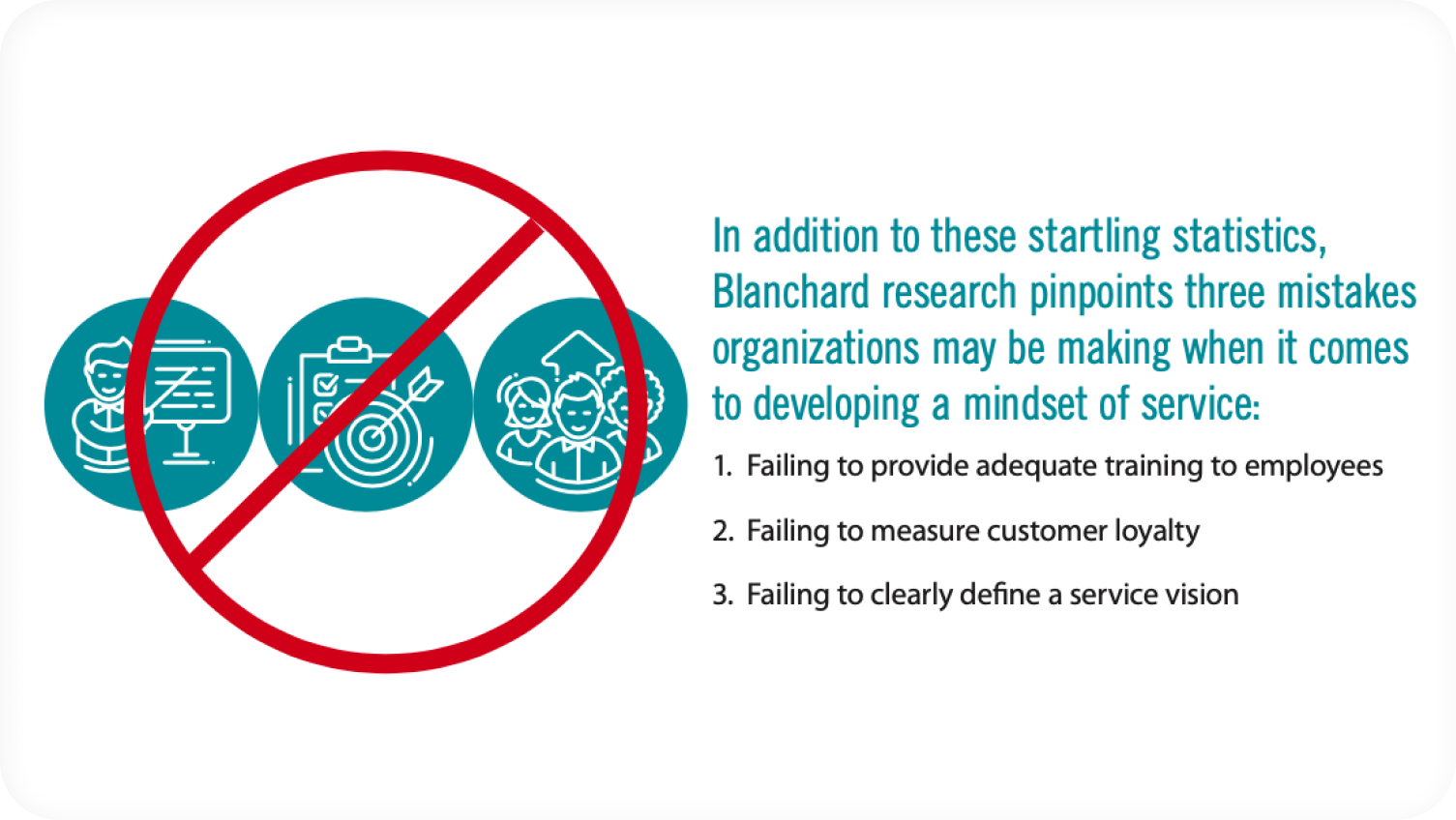When it comes to customer loyalty, is your business flourishing or failing? Three critical mistakes your organization may be making
When it comes to customer loyalty, is your business flourishing or failing? Three critical mistakes your organization may be making
Providing an exceptional customer experience is critical for an organization to boost customer loyalty and improve their competitive advantage
But when it comes to providing great service, most organizations are overlooking key elements that can make the difference between so-so and stellar service.
The ability to provide great service is dependent upon how well the organization supports and trains the individuals who serve the customer.
Without training, your employees can’t always do their best for the customer, and your organization could miss the boat on improving customer service. Poor customer service leads to poor business results, diminishing customer loyalty, and reduced profitability.
In addition to providing training for customer service individuals, organizations must create and maintain a service culture. A Forbes article stated that customer service is not a department — it’s a philosophy to be embraced by every employee, from the CEO to the most recently hired.

The High Cost of Poor Service
- Poor customer service costs organizations $338.5 billion a year globally
- Seven out of ten buyers have ended a relationship with a company or brand due to poor service
- Customers typically tell twice as many people about a bad customer service experience as they do about a good one
And ... it doesn’t stop there:
- Seventy-eight percent of consumers have bailed on a transaction or not made an intended purchase because of a poor service experience
- It takes 12 positive experiences to make up for one unresolved negative experience
- It is six to seven times more expensive to acquire a new customer than it is to keep a current one
3 mistakes

1
Failing to Train Employees
Most organizations agree that customer service is everyone’s job, not just those who are closest to the customer. In a recent Blanchard survey, 76 percent of respondents said that in their organization, this philosophy is widely shared. Yet 20 percent said they provide training as a means for improving levels of service and only 15 percent provided training to managers responsible for managing customer-facing personnel.
Training your employees teaches them how to communicate effectively, become proactive problem solvers, and take ownership for creating a stellar customer experience. But without training, your people won’t know what’s expected of them or what good service looks like, so they won’t know how to best serve the customer and that can undermine the customer experience and your organization’s profitability.
2
Failing to Measure Customer Loyalty
While many organizations have some sort of system to measure customer loyalty, too many others don’t. Blanchard research shows that almost 12 percent of respondents said their organizations didn’t measure customer service and another 16 percent said they didn’t even know whether their organizations measured customer service.
Fifty percent of those organizations that don’t measure customer loyalty responded that it isn’t seen as important. This leaves the organization blind to customer needs and opinions, unable to make improvements to current products, and lacking the information to innovate with future products and solutions to meet untapped needs, in jeopardy of losing customer loyalty.
3
Failing to Define a Service Vision
When it comes to serving the customer, organizations must clarify what they want their service vision to be. This establishes clear guidelines regarding the key behaviors and values they want their employees to emulate when interacting with the customer. Blanchard research reveals that 19 percent of organizations only had some degree of defined service vision. And another 14 percent said their organizations had little to no service vision.
If your organization doesn’t articulate clear standards, guidelines, and a picture of how they want employees to interact with the customer, your customer-facing employees will be left to define this for themselves, which undermines the ability to create a consistent and cohesive customer experience. All of which can leave your customers frustrated and searching for alternatives to doing business with your organization.
Creating a memorable customer experience gives your organization a significant competitive advantage and is crucial for distinguishing your organization’s brand
Companies that have excellent customer service are more likely to earn repeat business from customers, to garner more referrals, and to have greater customer loyalty than those that don’t.
But to achieve this, organizations must focus on creating a service-oriented culture and providing the training to support those closest to the customer. Providing training allows employees to better understand the impact their role has on the organization and to develop the ability to empathize and connect with the customer.

Organizations that invest in training show their employees that they care about their continual development and progress
In turn, this can impact the degree to which employees become more engaged in the company and understand how their role can enhance the overall customer experience, thereby boosting profits.
Every day, with every interaction, your organization can either gain or lose a customer.
